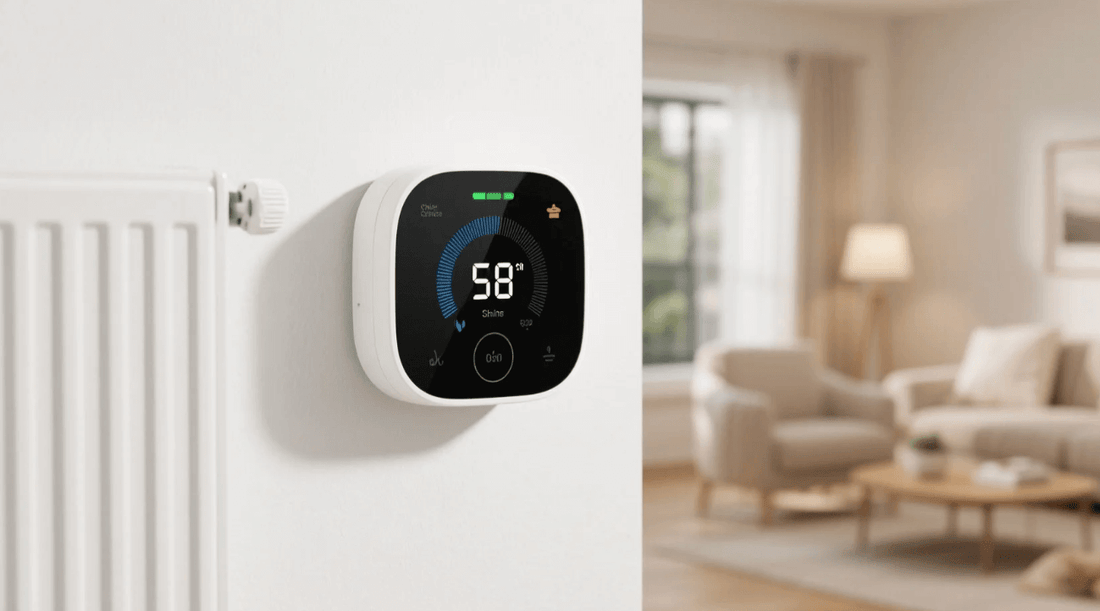
Best Smart Thermostats in China Marketing Guide
Share
Introduction
In the evolving smart home market, finding the best smart thermostats in China can be overwhelming. This guide explains top options, key features, and practical benefits—helping Chinese smart‑home users make informed decisions with confidence.
Why Choose a Smart Thermostat?
Energy Savings & Cost Control
Smart thermostats are designed for smart scheduling, remote control, and adaptive learning. In trials, typical households see heating and cooling energy savings of 10–15% or more .
Enhanced Comfort & Convenience
With features like geofencing, occupancy sensing, and voice integration, users experience seamless comfort—all managed via smartphone or smart speakers.
Environmental Responsibility
By optimizing HVAC efficiency, smart thermostats reduce energy use and carbon emissions—aligning with sustainable living values.

Key Features of the best smart thermostats
Learning Capability
Top-tier models—including Nest and Ecobee—track patterns and adjust settings automatically, offering hands-free home temperature management.
Multi-Zone Support
In multi-room homes, thermostats with remote sensors (e.g., Ecobee Smart Si, Bosch II) deliver balanced comfort, especially in high-heat or cold zones.
Connectivity & Ecosystem Compatibility
Leading models in China support platforms like Tuya, Mi Home, Alexa, Google Home, and Apple HomeKit—ensuring seamless integration with broader smart home systems .
Power and Wiring
Smart models usually require a C‑wire or power adapter. Some models offer battery backup but a reliable power supply remains essential.
Top best smart thermostats in China
Here are the top-rated smart thermostats available in China, highlighting their strengths:
EdgeAnt: Voice-controlled, compact, and Google Assistant compatible—ideal for modern homes.
Google Nest Learning Thermostat (3rd Gen): Self-learning, big display, widespread acclaim, supports Nest ecosystem.
ecobee Smart Si Thermostat: Comes with remote sensors, full-colour non-touch display, energy savings up to 23%.
Mysa Wi Fi Programmable Thermostat: Sleek design, ideal for electric heating, widely used in eco-friendly homes.
Bosch II Smart Thermostat: Simple UI, strong performance, suited for Bosch-compatible HVAC systems.

How to Choose
Compatibility
Confirm support for local AVAC systems (gas, electric, heat‑pump). Ensure thermostat supports Chinese voltage and HVAC brands.
Ecosystem Integration
If you use Mi Home or Tuya, pick a thermostat that integrates natively—like Tuya‑certified Nest variants or Bosch II.
Power Source
Check for a C‑wire or included power adapter. Without it, devices may lose Wi‑Fi or scheduling features.
Local Support & Certification
Ensure devices are CE, CCC certified and have local after-sales service.
Installation & Setup Tips
Pre-installation check: Turn off power, label HVAC wires, confirm C‑wire availability.
Installation guide: Use clear diagrams—Google and Bosch include visual labels.
Wi‑Fi setup: Connect via 2.4 GHz networks and allow cloud integration for remote control.
Sensor placement: Ensure remote sensors are in central zones, away from direct sunlight.
Eco‑tuning: Use learning mode or set schedules to match daily routines for optimal efficiency.
Maximizing Value
App‑Driven Scheduling
Smartphone apps allow schedules based on occupancy, weather, or energy pricing—reducing costs.
Voice Assistance & Automations
Use Alexa, Google Assistant, or Xiaomi automation for voice-based control and scenario-based triggers.
Data‑Driven Adjustments
Many smart thermostats provide reports on humidity, runtimes, and usage patterns—to find further efficiency gains.
Firmware & Security
Keep firmware updated to patch vulnerabilities. Change default passwords and enable two-factor authentication when available.
Challenges & Solutions
Grid Synchronization
Smart thermostats may sync across households during peak off‑cooling periods, potentially stressing power grids. Use randomized scheduling or time‑delay settings to offset this effect.
Data Privacy
Some Chinese-made devices (e.g., Tuya-based) may transmit data to external servers . Opt for providers with clear privacy policies or local cloud servers.
HVAC Compatibility
Old central heating systems may lack a C‑wire. Solutions include power‐stealing adapters or retrofit kits.
FAQs
Q1: Are these smart thermostats compatible with Chinese HVAC brands?
A: Yes. Popular models work with major Chinese systems like Gree or Midea—but always verify wiring and control compatibility.
Q2: Does Nest work with Mi Home?
A: Only if Nest is the Tuya-certified version sold in China. Global Nest models connect via Google Home instead.
Q3: What savings can I expect?
A: Typical annual energy savings range from 10–20%, depending on usage and system type.
Q4: How secure are Chinese smart thermostat platforms?
A: Security varies. Always check for local data hosting and privacy policies—and keep firmware current.
Q5: Can one thermostat handle multiple rooms?
A: Yes. Thermostats with remote sensors (e.g., Ecobee) support multi-zone control for balanced comfort.
Conclusion
For users seeking the best smart thermostats in China, the right choice depends on compatibility, ecosystem integration, and support. From voice-enabled Nest models to multi-zone Ecobee systems, each option provides compelling energy savings, convenience, and smarter control. By focusing on local regulations, security, and real-world usage, this guide aims to inform and empower smart-home shoppers in China.